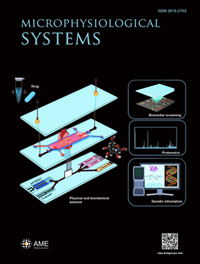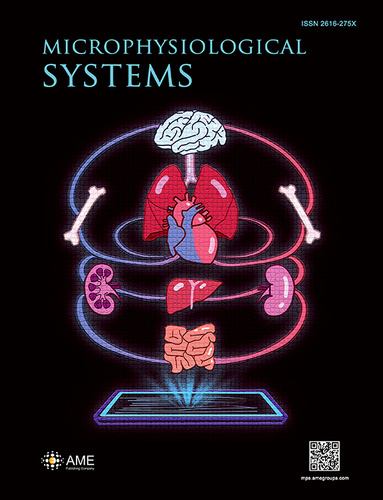2018
Title: Microbiota on chip
Description: Microbiota-on-chip systems, microfluidic systems engineered to recapitulate the interplay between human cells and bacteria in the human gut, are becoming powerful enablers to study the role of our intestinal biota in disease and health. In the years to come they will be key players in solving important questions related to the nutritional effects of food, the influences of food additives and specific pharma compounds, and the etiology, diagnostics, and treatment of specific diseases. Novel microfabrication techniques and biomaterials, more complex bacterial-cell systems, and improved sensing and instrumentation strategies should be incorporated into microbiota-on-chip platforms to accomplish these high aims.
Article: Santiago GT, Lobo-Zegers MJ, MontesFonseca SL, Zhang YS, Alvarez MM. Gut-microbiota-on-achip: an enabling field for physiological research. Microphysiol Syst 2018. https://mps.amegroups.com/article/view/4777/5555
Title: Organs-on-chip monitoring: (Bio)sensors and other strategies
Description: As a paradigm shifting player of tissue engineering, organs-on-chips are considered to hold great potential for future “clinical trials on chip” as well as a step forward to design personalized medicine. Sophisticated monitoring tools and in vitro read out systems are indispensable for getting spatially and temporally resolved information about cell physiology and microenvironment as well as pharmacodynamics drug responses.
Article: Kilic T, Navaee F, Stradolini F, Renaud P, Carrara S. Organs-on-chip monitoring: sensors and other strategies. Microphysiol Syst 2018;2:5. https://mps.amegroups.com/article/view/4689/5479



